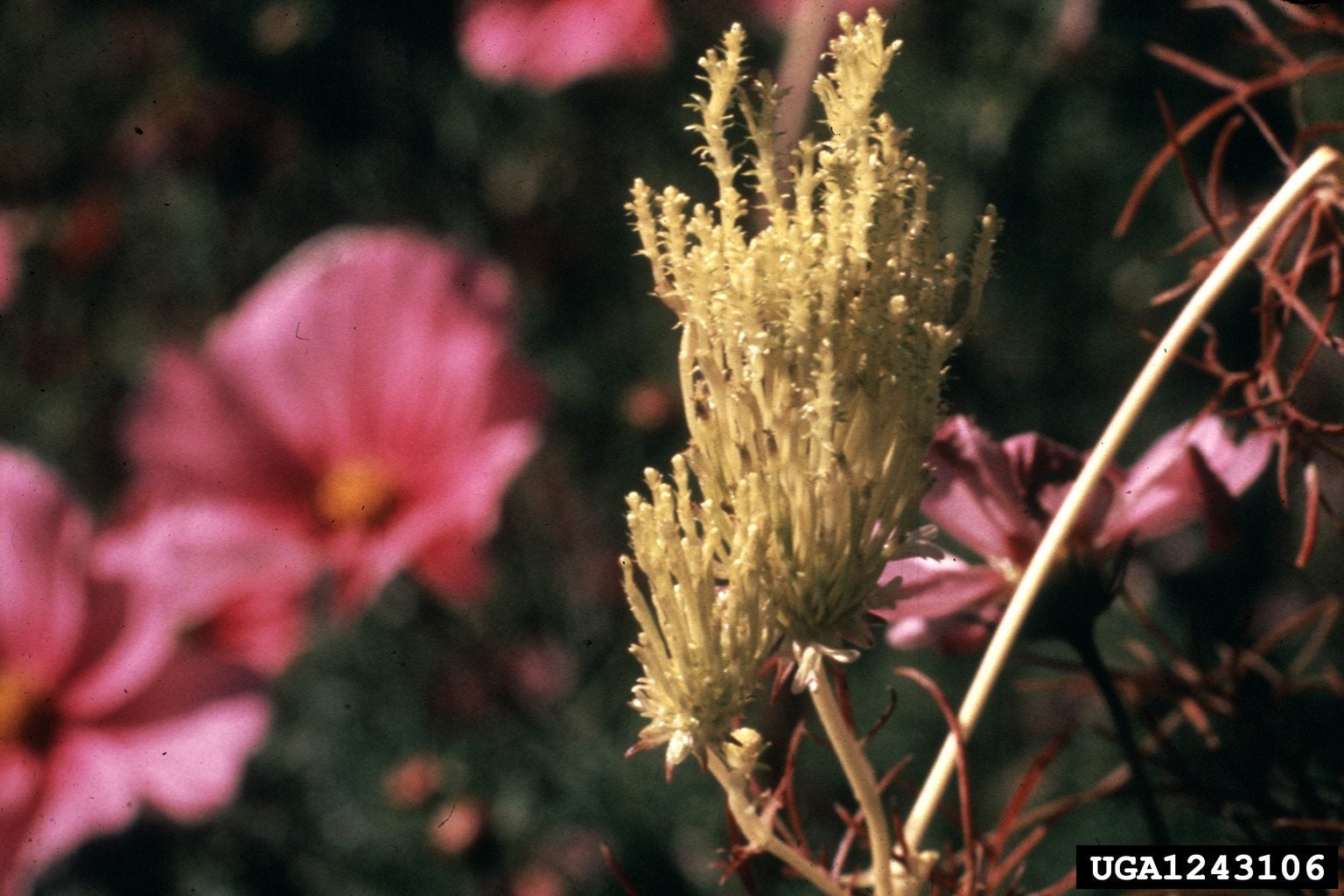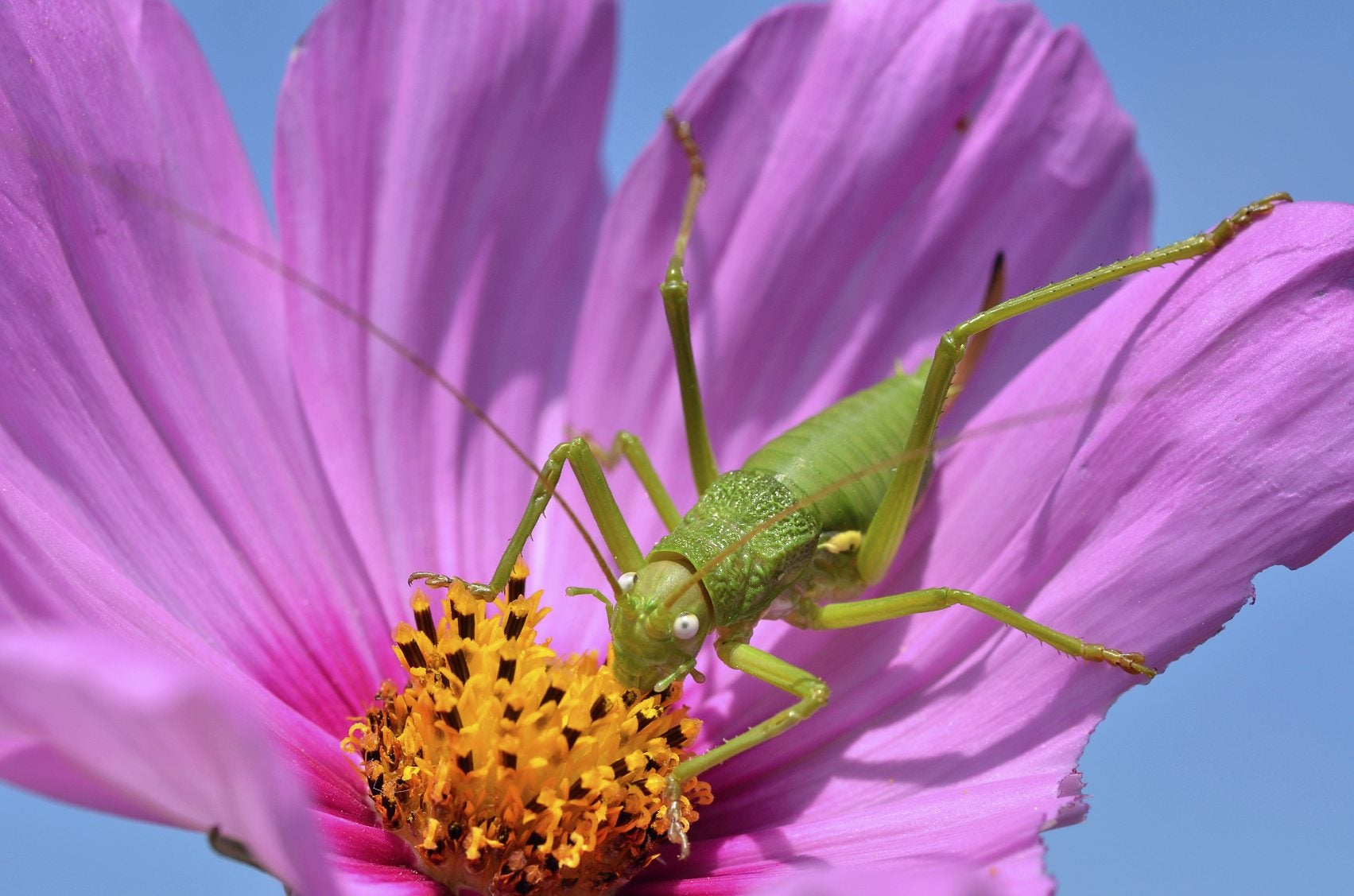Cosmos Flower Diseases – Reasons Cosmos Flowers Are Dying


Cosmos plants are Mexican natives that are easy to grow and thrive in bright, sunny areas. These undemanding blooms rarely have any issues, but a few diseases can pose problems. Cosmos plant diseases range from fungal to bacterial and into insect vectored viruses. Controlling insects, providing proper irrigation, and planting healthy plants can minimize any problems with cosmos plants.
Common Diseases of Cosmos
There are over 25 species of cosmos or Mexican aster as it is also known. Cosmos is in the Aster family of plants and its blooms have a distinct resemblance to that plant. Cosmos reseeds itself freely and is tolerant of low moisture and fertile soils. It is a very hardy plant with few special needs, and it will return year after year to brighten the garden space. If your cosmos flowers are dying during the growing season, it's time to investigate some possible causes and save these long-blooming, feathery-foliaged plants.
Fungal Cosmos Plant Diseases
Two of the most common fungal diseases of plants, Fusarium wilt and powdery mildew, can also plague cosmos plants. Fusarium wilt not only causes the plant to wilt but discolors the stems and foliage. If you dig up the plant, you will see a pink mass on the roots. The whole plant, unfortunately, is going to die and should be destroyed to avoid spreading the fungus. Powdery mildew spores float on the breeze and will attach to any host plant in shade. The fungus forms a powdery white coating over leaves, which will eventually cause foliage to yellow and drop off if left untreated. Plants with good ventilation, in bright light, and that are watered in the day so foliage can dry are not as susceptible to fungal diseases of cosmoses. You can also use a horticultural fungicide to fight the disease.
Bacterial Problems with Cosmos Plants
Bacterial wilt is one of the classic cosmos flower diseases. As it might seem, it is a bacterial disease that causes stems to wilt at the base. The entire stem and flower will become infected and finally the root system. You must dig up the plant and destroy it, as there is no cure. Aster yellows is one of the diseases of cosmoses that affects any plant in the Aster family. It is transmitted by leafhoppers, those tiny insects that appear to be shrunken grasshoppers. The disease is caused by phytoplasma and, if infected, you will see cosmos flowers dying after becoming distorted and stunted. The foliage will present with yellowed mottling, indicating the feeding sites of the vectors. Infected plants should also be destroyed, as there is no cure.
Insect Vectors That Cause Cosmos Flower Diseases
In the garden, our plants just represent one big buffet to bugs. Cosmos plants are probably like candy to some insect pests. Most don't do any significant damage, but a few transmit viruses and disease during their feeding activity. We already mentioned leafhoppers, which can also transmit curly top virus, attacking leaves and roots. Thrips transmit tomato spotted virus, a disease with no cure. Buds are delayed and distorted and when they do open, they have spotted, ringed, or lined petals. Other sucking insects can maim the plant and diminish health. Use a good horticultural soap and quick blasts of water during the day to remove many of the pests.
Gardening tips, videos, info and more delivered right to your inbox!
Sign up for the Gardening Know How newsletter today and receive a free copy of our e-book "How to Grow Delicious Tomatoes".

Bonnie Grant is a professional landscaper with a Certification in Urban Gardening. She has been gardening and writing for 15 years. A former professional chef, she has a passion for edible landscaping.
-
 Looking For Plants To Give You The Soft And Fuzzies? Try These 5 Fuzzy Leaf Plant Options
Looking For Plants To Give You The Soft And Fuzzies? Try These 5 Fuzzy Leaf Plant OptionsLovers of texture, drama, silver foliage and tactile plants will adore these special sensory garden additions. These fuzzy leaf plant options will leave you all aglow
By Susan Albert
-
 Get Ready For A Summer Of Hummers! Grow These Full Sun Hummingbird Plants and Flowers
Get Ready For A Summer Of Hummers! Grow These Full Sun Hummingbird Plants and FlowersIf you’re lucky enough to enjoy a sunny backyard, make sure you are maxing out on your pollinator opportunities and grow these full sun hummingbird plants and flowers
By Tonya Barnett
-
 Cutting Back Cosmos For More Blooms
Cutting Back Cosmos For More BloomsCutting cosmos will give you new flowers for the entire growing season as well as blooms for floral arrangements. Click to learn when and how.
By Mary Ellen Ellis
-
 Sulphur Cosmos Information – How To Grow A Mexican Aster Flower
Sulphur Cosmos Information – How To Grow A Mexican Aster FlowerBy Mary Ellen Ellis
-
 Cosmos Plant Varieties: Learn About Types Of Cosmos Plants
Cosmos Plant Varieties: Learn About Types Of Cosmos PlantsWhen it comes to considering the many types of cosmos plants on the market, gardeners are faced with a wealth of riches. Learn about a few of the best cosmos plant varieties and cosmos flower types for the garden in this article.
By Mary H. Dyer
-
 Companion Plants For Cosmos – Learn About Cosmos Companion Plants
Companion Plants For Cosmos – Learn About Cosmos Companion PlantsWhat grows well with cosmos, and why do cosmos need companions? Companion planting serves a number of valuable purposes in the garden. Click this article to find out what plants grow well with cosmos in the garden.
By Mary H. Dyer
-
 Common Insects On Cosmos: Treating Pests On Cosmos Plants
Common Insects On Cosmos: Treating Pests On Cosmos PlantsCosmos plant pests are rare and generally don't cause significant damage to the health of the plant. What pests do cosmos get? Learn about treating pests on cosmos plants in this article and keep your flowers looking beautiful.
By Bonnie L. Grant
-
 Caring For Chocolate Cosmos Plants: Growing Chocolate Cosmos Flowers
Caring For Chocolate Cosmos Plants: Growing Chocolate Cosmos FlowersChocolate isn't just for the kitchen, it's also for the garden, especially a chocolate one. Growing chocolate cosmos flowers will delight any chocolate lover. This article had information on its care in the garden. Click here to learn more.
By Gardening Know How
-
 Cosmos Not Flowering: Why Are My Cosmos Not Blooming
Cosmos Not Flowering: Why Are My Cosmos Not BloomingCosmos is a showy annual plant commonly grown in gardens. But what happens when there are no blooms on cosmos? Read this article to learn more about why cosmos will not flower.
By Susan Patterson
-
 Should You Deadhead Cosmos: Tips For Removing Cosmos Spent Flowers
Should You Deadhead Cosmos: Tips For Removing Cosmos Spent FlowersDeadheading cosmos after the blooms start to fade will rejuvenate the plant and cause it to bloom over and over again, up until the autumn frost. Find out how to deadhead cosmos in this article.
By Anne Baley